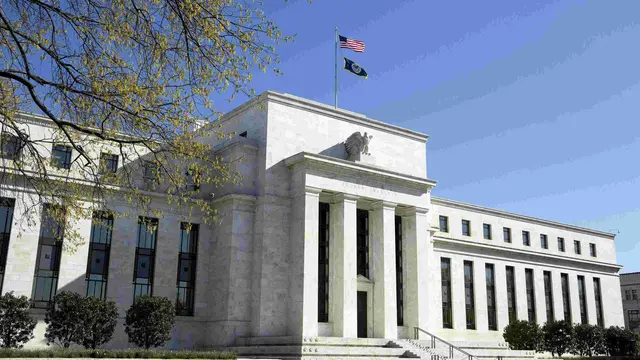The U.S. Federal Reserve raised interest rates on Wednesday and said it was keeping the core of its plan to tighten monetary policy intact even as central bank officials said they would likely slow the pace of further rate increases next year.
After weeks of market volatility and calls by President Donald Trump to stop increasing borrowing costs, the Fed lifted rates by a quarter of a percentage point. Fed Chairman Jerome Powell also said the central bank would continue drawing down the size of its balance sheet by 50 billion U.S. dollars each month.
The rate increase, the fourth of the year, was expected, but Powell's comments on the balance sheet in a news conference, though a repetition of longstanding Fed policy, prompted a sell-off on equity markets.
The S&P 500 index was down about 1.6 percent in late afternoon trading. Bond prices rallied and the dollar, weaker on the day before the decision, regained some ground against most major currencies.
By diminishing its bond market holdings each month, the Fed puts further upward pressure on interest rates, something Trump explicitly requested them this week to stop.
“I think the run-off of the balance sheet has been smooth and has served its purpose, and I don't see us changing that,” Powell told reporters after the Fed raised its federal funds rate to a range of between 2.25 percent to 2.50 percent.
File photo of Federal Reserve Board Governor Jerome Powell discussing financial regulation in Washington, U.S., October 3, 2017 /Reuters Photo
The central bank did bow to rising uncertainty about global economic growth, and expectations the U.S. economy will slow next year, with fresh economic forecasts showing officials at the median now see only two more rate hikes next year compared to the three projected in September.
It noted that “some” further gradual rate hikes would be needed, a subtle change that suggested it was preparing to stop raising borrowing costs.
But another message was clear in the policy statement issued after the Fed's last meeting of the year and Powell's comments: The U.S. economy continues to perform well and no longer needs the Fed's support either through lower-than-normal interest rates or by maintaining of a massive balance sheet.
In its statement, the Fed said risks to the economy were “roughly balanced” but that it would “continue to monitor global economic and financial developments and assess their implications for the economic outlook.”
The decision to raise borrowing costs again is likely to anger Trump, who has repeatedly attacked the central bank's tightening this year as damaging to the economy.
The Fed has been raising rates to reduce the boost that monetary policy gives to the economy, which is growing faster than what central bank policymakers view as a sustainable rate.
There are worries, however, that the economy could enter choppy waters next year as the fiscal boost from the Trump administration's spending and 1.5 trillion U.S. dollars tax cut package fades and the global economy slows.
The Fed also made a widely expected technical adjustment, raising the rate it pays on banks' excess reserves by just 20 basis points to give it better control over the policy rate and keep it within the targeted range.
“I think that markets were looking for more in terms of the pause,” said Jamie Cox, managing partner at Harris Financial Group in Richmond, Virginia.
“It's not as dovish as expected, but I do believe the Fed will ultimately back off even further as we move into the new year.”
(REUTERS)
 简体中文
简体中文

